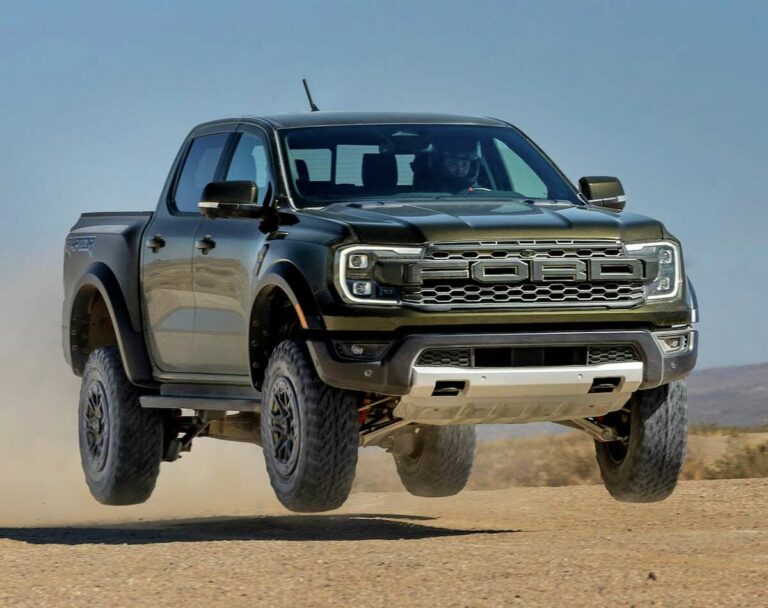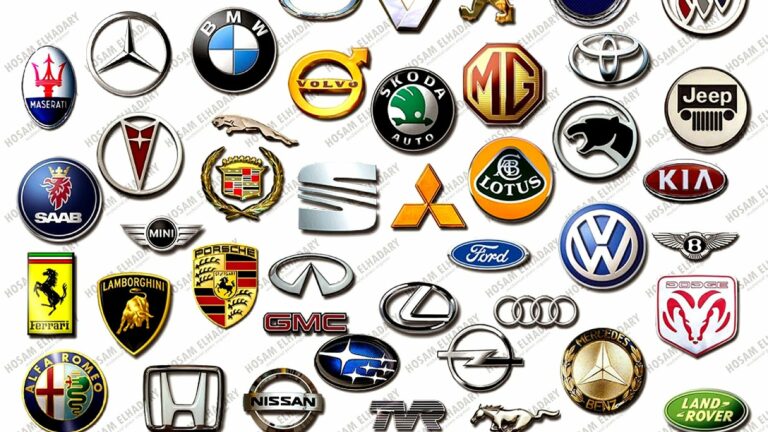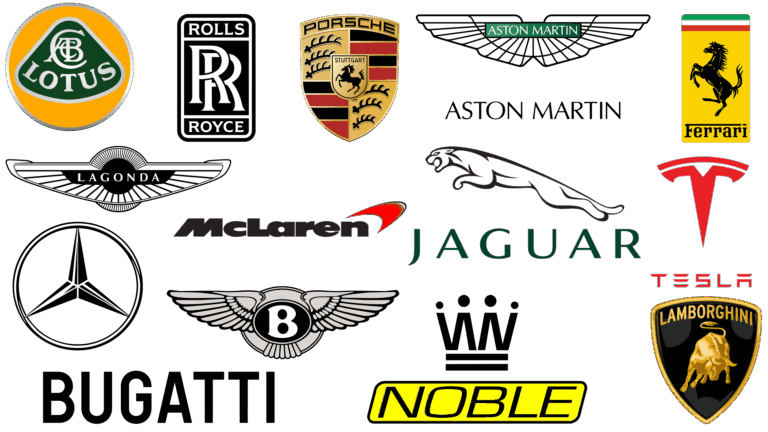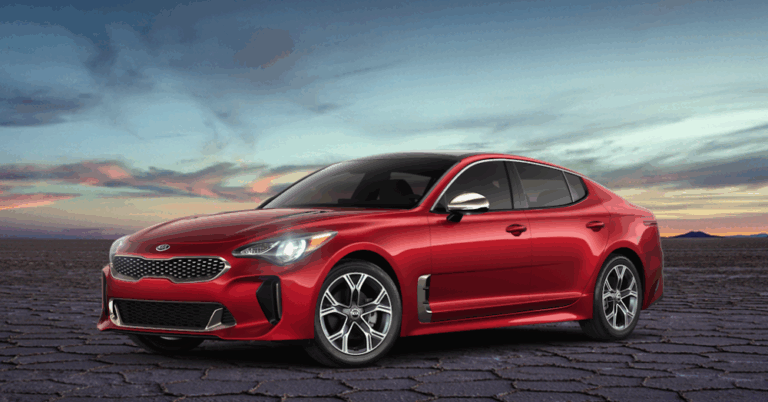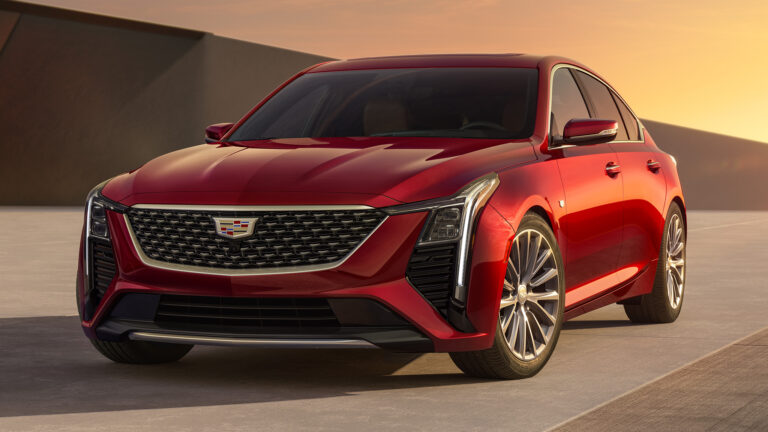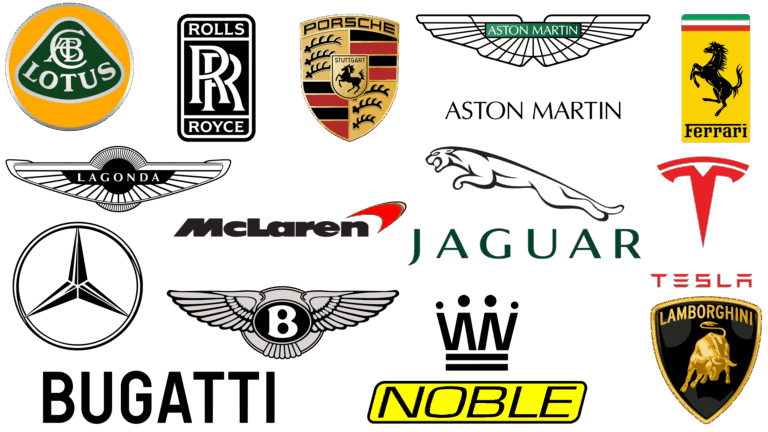General Motors Car Brands: A Comprehensive Guide to the Automotive Giant’s Diverse Portfolio
General Motors Car Brands: A Comprehensive Guide to the Automotive Giant’s Diverse Portfolio cars.truckstrend.com
General Motors (GM) stands as one of the world’s largest and most influential automotive manufacturers, a titan whose impact on global transportation has been profound and enduring. For over a century, GM has been a cornerstone of innovation, mass production, and design, shaping the way millions move. At the heart of its enduring success lies a carefully curated and strategically managed portfolio of car brands, each designed to cater to distinct market segments and consumer needs. Understanding these brands is key to appreciating GM’s vast reach and its strategic vision for the future of mobility. This comprehensive guide will delve into the storied history, current offerings, and future trajectory of General Motors’ diverse family of car brands, providing practical insights for anyone seeking to navigate the expansive world of GM vehicles.
The Evolution of a Giant: A Brief History of GM’s Brand Strategy
General Motors Car Brands: A Comprehensive Guide to the Automotive Giant’s Diverse Portfolio
Founded in 1908 by William C. Durant, General Motors quickly grew through the acquisition of several pioneering automotive companies, including Buick, Oldsmobile, Cadillac, and Oakland (later Pontiac). Durant’s vision, refined by Alfred P. Sloan Jr. in the 1920s, established the famous "ladder of success" strategy: "a car for every purse and purpose." This hierarchical brand structure allowed customers to start with an entry-level Chevrolet and progress through Pontiac, Oldsmobile, Buick, and ultimately, Cadillac, as their financial standing improved. This multi-brand approach proved incredibly successful, allowing GM to dominate the automotive landscape for much of the 20th century.
However, the late 20th and early 21st centuries brought new challenges, including increased competition, changing consumer preferences, and economic downturns. The 2009 financial crisis and subsequent bankruptcy forced GM to undergo a radical restructuring, shedding several iconic brands that no longer fit its streamlined vision. Brands like Oldsmobile, Pontiac, Saturn, Hummer, and Saab were discontinued or sold off. This painful but necessary process led to a more focused and profitable core portfolio, emphasizing quality, efficiency, and innovation over sheer volume. Today, GM operates with a leaner, more strategically aligned set of brands, primarily focused on North America, while maintaining key international joint ventures.
Core Pillars of the GM Empire: Current North American Brands
General Motors’ current North American brand strategy is built upon four distinct pillars: Chevrolet, GMC, Buick, and Cadillac. Each brand serves a specific niche, contributing to GM’s overall market coverage.
1. Chevrolet: The Heartbeat of America
Chevrolet, often affectionately known as "Chevy," is GM’s mainstream, volume-selling brand, embodying a blend of value, versatility, and iconic American spirit. Since its inception in 1911, Chevrolet has aimed to provide reliable and accessible vehicles for the masses, from families and commuters to workers and enthusiasts.
- Positioning: Mainstream, reliable, value-driven, broad appeal.
- Key Offerings: Chevrolet boasts an incredibly diverse lineup:
- Trucks: The Silverado full-size pickup and Colorado mid-size pickup are sales powerhouses, known for their capability and diverse configurations.
- SUVs: From the compact Trax and Equinox to the mid-size Blazer and Traverse, and the full-size Tahoe and Suburban, Chevrolet offers an SUV for every family size and need.
- Performance: The legendary Corvette supercar and the Camaro muscle car represent Chevrolet’s commitment to high-performance vehicles, offering thrilling driving experiences.
- Electric Vehicles (EVs): Chevrolet is at the forefront of GM’s electrification push with models like the Bolt EV and EUV, and upcoming models such as the Blazer EV, Equinox EV, and Silverado EV, showcasing a commitment to sustainable mobility.

- Target Audience: Broad demographic, including families, small businesses, first-time buyers, and performance enthusiasts seeking a blend of practicality and excitement.
2. GMC: Professional Grade Premium

GMC, or General Motors Truck Company, began as a dedicated truck manufacturer and has evolved into GM’s premium truck and SUV brand. While sharing platforms with Chevrolet vehicles, GMC distinguishes itself with elevated styling, more refined interiors, and a focus on "Professional Grade" capability and features.
- Positioning: Premium trucks and SUVs, robust capability with refined aesthetics, professional grade.
- Key Offerings: GMC’s lineup mirrors Chevrolet’s utility offerings but with an upscale twist:
- Trucks: The Sierra full-size pickup and Canyon mid-size pickup offer more sophisticated designs, higher-quality materials, and exclusive features compared to their Chevy counterparts.
- SUVs: The Terrain compact SUV, Acadia mid-size SUV, and the full-size Yukon and Yukon XL provide spaciousness and luxury, especially in their top-tier Denali trims.
- Denali Sub-Brand: The Denali trim level across GMC’s lineup is a significant differentiator, offering luxurious interiors, unique styling cues, and advanced features that push these vehicles into near-luxury territory.
- Electric Vehicles (EVs): The Hummer EV Pickup and SUV, revived under the GMC brand, represent an extreme take on electric off-road capability and luxury.
- Target Audience: Professionals, small business owners, and consumers who desire the utility of a truck or SUV but with a more premium feel, refined styling, and advanced features.
3. Buick: Accessible Luxury and Quiet Comfort
Buick has historically occupied the space between mainstream and luxury, offering a blend of comfort, style, and accessible premium features. In recent years, Buick has streamlined its lineup to focus exclusively on SUVs, catering to a growing demand for versatile, comfortable, and stylish crossovers.
- Positioning: Entry-luxury, quiet comfort, sophisticated design, accessible premium.
- Key Offerings: Buick’s current lineup is exclusively composed of SUVs:
- SUVs: The Encore GX, Envision, and Enclave offer varying sizes of crossovers, each emphasizing a quiet ride, comfortable interiors, and contemporary designs. They often feature premium touches, advanced safety features, and user-friendly technology.
- Target Audience: Consumers seeking a comfortable, quiet, and stylish vehicle with premium features without the full price tag of a traditional luxury brand. Often appeals to empty nesters, young families, and those prioritizing refinement and ease of use.
4. Cadillac: American Luxury Redefined
Cadillac is GM’s flagship luxury brand, synonymous with American opulence, cutting-edge technology, and bold design. With a history of innovation (including the first electric starter and first mass-produced V8 engine), Cadillac is now redefining itself with a strong emphasis on performance, advanced technology, and an all-electric future.
- Positioning: Flagship luxury, performance, cutting-edge technology, bold American design.
- Key Offerings: Cadillac offers a mix of traditional luxury and futuristic innovation:
- SUVs: The iconic Escalade full-size SUV is a status symbol, while the XT4, XT5, and XT6 offer luxury in compact, mid-size, and three-row configurations, respectively.
- Sedans: The CT4 and CT5 sedans continue Cadillac’s legacy of performance and driver engagement, especially in their high-performance V-Series variants.
- Electric Vehicles (EVs): Cadillac is leading GM’s EV charge with the Lyriq, an elegant all-electric SUV, and the ultra-luxury Celestiq, a bespoke electric sedan that previews the brand’s ultimate EV ambitions. Cadillac aims to be an EV-first brand.
- Target Audience: Affluent buyers, those seeking the pinnacle of American luxury, technology enthusiasts, and performance-oriented drivers.
Beyond North America: International Brands and Strategic Partnerships
While the four core brands dominate in North America, GM’s global footprint extends through significant international operations and joint ventures, particularly in China. Brands like Wuling and Baojun, produced under the SAIC-GM-Wuling joint venture, cater to the unique demands of the Chinese market, focusing on affordable, practical, and increasingly electrified vehicles. GM has also had a presence with brands like Holden in Australia (now discontinued) and Opel/Vauxhall in Europe (sold to PSA Group, now Stellantis, in 2017), illustrating its willingness to adapt and divest in response to global market dynamics.
The Future of GM Brands: Electrification and Innovation
General Motors is currently undergoing its most significant transformation in decades, committing to an "all-electric future." This ambitious vision, encapsulated by the "Ultium" battery platform, will fundamentally redefine each of its brands.
- Ultium Platform: This modular battery and drive unit architecture allows GM to produce a wide range of EVs with varying performance and range, from mass-market Chevrolet models to ultra-luxury Cadillacs.
- Electrification as Identity: Each brand is embracing electrification in its own way. Cadillac is becoming EV-first, Chevrolet is bringing affordable EVs to the mainstream, and GMC is pushing the boundaries of electric truck capability with the Hummer EV.
- Autonomous Driving: GM’s subsidiary, Cruise, is at the forefront of autonomous vehicle technology, promising a future of "Zero Crashes, Zero Emissions, Zero Congestion."
- Software-Defined Vehicles: Future GM vehicles will be increasingly defined by their software, enabling over-the-air updates, personalized experiences, and new revenue streams through subscription services and enhanced features.
This strategic pivot ensures that GM’s brands remain relevant and competitive in a rapidly evolving automotive landscape, promising innovative vehicles that meet the demands of tomorrow’s drivers.
Choosing the Right GM Brand: Practical Advice
Navigating General Motors’ diverse brand portfolio can seem daunting, but understanding your own needs and preferences can simplify the process.
- Define Your Budget: GM brands span a wide price range. Chevrolet offers accessible options, while Cadillac represents the premium end.
- Assess Your Needs:
- Utility & Capability: If you need a workhorse truck or a versatile SUV for family and cargo, Chevrolet or GMC are your primary considerations.
- Comfort & Refinement: Buick excels in offering a quiet, comfortable ride with premium touches.
- Luxury & Performance: Cadillac delivers top-tier luxury, advanced technology, and thrilling performance.
- Consider Your Lifestyle:
- Are you an urban dweller needing nimble maneuverability? A compact Chevy or Buick SUV might fit.
- Do you haul heavy loads or go off-roading? A GMC or Chevrolet truck is designed for that.
- Do you prioritize cutting-edge technology and a prestigious image? Cadillac is your answer.
- Test Drive: The best way to understand a vehicle’s feel, features, and comfort is to test drive models from different brands that pique your interest.
- Research Features and Technology: Each brand offers different levels of infotainment, safety features, and driver-assistance systems. Ensure the chosen model aligns with your technological preferences.
- Future-Proofing (EVs): If you’re considering an electric vehicle, explore the growing EV lineups from Chevrolet, GMC, and Cadillac, each offering unique electric driving experiences.
General Motors Car Brands: Overview & Approximate Starting MSRP
Please note that "Starting MSRP" (Manufacturer’s Suggested Retail Price) is approximate and subject to change based on trim level, options, market conditions, and incentives. These figures are for general comparison.
| Brand | Primary Focus | Key Models (Examples) | Starting MSRP Range (Approx.) | Target Audience |
|---|---|---|---|---|
| Chevrolet | Mainstream, Value, Performance | Silverado, Equinox, Traverse, Corvette, Bolt EV, Blazer EV | $25,000 – $70,000+ | Broad market, families, utility-focused, performance seekers |
| GMC | Premium Trucks & SUVs | Sierra, Yukon, Acadia, Terrain, Hummer EV | $30,000 – $110,000+ | Professionals, those seeking elevated utility and refinement |
| Buick | Entry-Luxury SUVs, Comfort | Envision, Encore GX, Enclave | $27,000 – $55,000+ | Comfort-oriented, accessible luxury, discerning practicality |
| Cadillac | Luxury, Performance, EVs | Escalade, XT5, Lyriq, CT5, Celestiq | $40,000 – $340,000+ | Affluent, tech-savvy, luxury seekers, performance enthusiasts |
(Note: The Celestiq is a bespoke, ultra-luxury vehicle with a starting MSRP significantly higher than other models, reflecting its hand-built nature.)
Frequently Asked Questions (FAQ) about General Motors Car Brands
Q1: How many car brands does GM currently own and actively sell in North America?
A1: General Motors primarily sells four car brands in North America: Chevrolet, GMC, Buick, and Cadillac. Globally, they also have significant joint ventures, especially in China, with brands like Wuling and Baojun.
Q2: Why did GM discontinue brands like Pontiac, Oldsmobile, and Saturn?
A2: These brands were largely discontinued as part of GM’s restructuring efforts following its 2009 bankruptcy. The goal was to streamline operations, reduce redundancy, and focus resources on a smaller, more profitable core set of brands that had clearer market identities and stronger financial performance.
Q3: What is GM’s strategy for electric vehicles (EVs) across its brands?
A3: GM is committed to an "all-electric future," aiming to transition away from gasoline-powered vehicles. Their strategy centers around the modular Ultium battery platform, which will underpin a wide range of EVs across all brands, from affordable Chevrolet models to luxurious Cadillacs and powerful GMC trucks. Each brand will offer distinct EV models tailored to its specific market segment.
Q4: Is GMC just a more expensive Chevrolet truck? What’s the difference?
A4: While GMC and Chevrolet trucks often share platforms and powertrains, GMC differentiates itself as a more premium offering. GMC vehicles typically feature unique, more refined styling, higher-quality interior materials, more standard features, and exclusive technologies. The "Denali" sub-brand within GMC further elevates the luxury and feature content, appealing to customers seeking a more upscale truck or SUV experience.
Q5: Does GM still own Opel or Vauxhall?
A5: No, General Motors sold its Opel and Vauxhall brands (its European operations) to PSA Group (now part of Stellantis) in 2017. This sale was part of GM’s ongoing strategy to focus on its most profitable markets and brands.
Concluding Summary
General Motors’ journey through the automotive landscape is a testament to adaptability, strategic vision, and an unwavering commitment to innovation. From its early "car for every purse and purpose" philosophy to its current streamlined portfolio and bold embrace of an all-electric future, GM’s brand strategy has continuously evolved to meet the demands of a changing world. Chevrolet, GMC, Buick, and Cadillac each play a vital role, offering a diverse array of vehicles that cater to a vast spectrum of consumer needs and preferences.
As GM accelerates towards its vision of "Zero Crashes, Zero Emissions, Zero Congestion," these iconic brands will continue to lead the charge, redefining what it means to drive in the 21st century. Whether you’re seeking rugged utility, quiet comfort, exhilarating performance, or cutting-edge luxury, General Motors’ family of brands offers a compelling choice, solidifying its enduring legacy as a true automotive giant.


